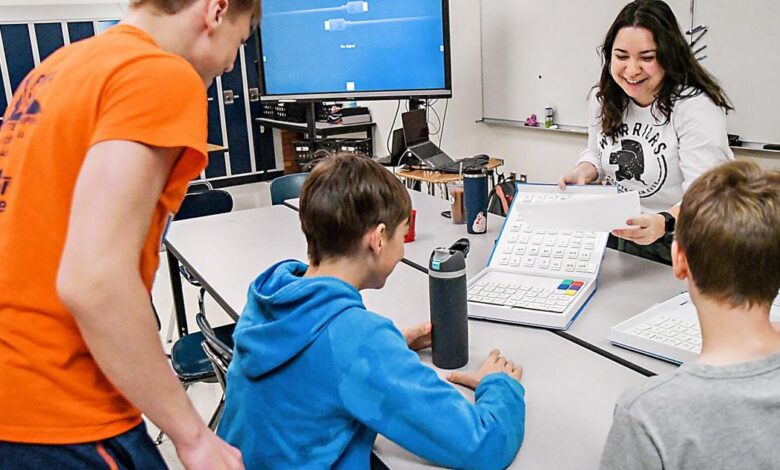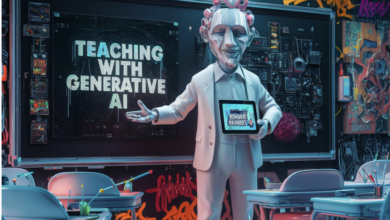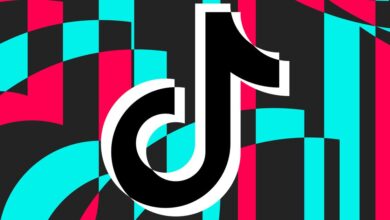The generative A.I. revolution: Part 2 | News

REGIONAL—Jazmin Mendieta had not considered that artificial intelligence might have a place in her classroom until she attended a national conference for educators who teach English to speakers of other languages.
“I learned that ChatGPT is like a machine, and you need to teach the machine how to speak and what to produce,” Mendieta said. “We have this idea that ChatGPT is going to destroy our brains, and just be very detrimental, when it actually is just an aid that needs to be trained.”
Mendieta is an English as a Second Language teacher at Sioux Center Middle School, where the number of language-learning students has increased exponentially in recent years.
At the conference, Mendieta learned ChatGPT could be deployed to rewrite course materials in English to make them more accessible to her students, many of them primary speakers of Spanish. She said the workshop demystified ChatGPT, the A.I.-powered chatbot developed by Open A.I. and released to the public in late 2022.
“It felt like an alien for a long time,” Mendieta said.
Today, Mendieta regularly uses ChatGPT to adapt course materials for her language-learning students, a strategy that helps her create the low-stress environment language learners need to thrive.
Katie Crumrine explains an assignment to her students that requires them to create A.I.-generated illustrations in her seventh-grade social studies course at Sioux Center Middle School. Crumrine also has used an A.I. application to adjust the reading level of course materials.
“Language learning is hard because you enter a world, and you don’t know the sounds that you’re hearing, and often you look around and the school looks different — it’s all very new, and it’s just very overwhelming, all the time,” she said.
Mendieta uses ChatGPT to adapt course texts by employing a series of three increasingly refined prompts. After inputting the text she wants to adapt, Mendieta enters a description of a student’s reading proficiency, drawing language directly from the student’s results on the English Language Proficiency Assessment for the 21st Century. A state-recognized assessment, ELPA21 provides Achievement Level Descriptors that correspond with scores for each of four testing domains, one of which is reading.
“The third part of that prompt would be, ‘According to this descriptor, please modify the text above,” Mendieta said. “That’s the magic sentence.”
What Mendieta describes is a novel kind of collaboration between human and machine: Mendieta, in possession of human intelligence, interacts with ChatGPT, a tool designed to emulate her intelligence, to achieve a desired outcome.
“This way, I don’t need to go to a different book — I don’t need to go to a different website,” she said, referring to strategies she used to employ when searching for reading materials at a range of levels. “I can just use A.I. and train the machine for my purpose.”
Prompt engineering, also called “prompt crafting,” refers to the practice of designing and fine-tuning prompts to encourage an A.I. to produce relevant and high-quality outputs. Importantly, it is a skill learned through practice. A.I.-powered applications like ChatGPT do not come with user manuals, and their capabilities remain an open question, opaque even to their creators. Instead, the possible uses of A.I. are being discovered in real time, through millions of human interactions each day.
Mendieta quickly recognized all teachers could benefit from the ability to quickly and effectively adjust a text’s reading level to accommodate the needs of different students, and she recently led a professional development workshop for her middle school colleagues.
Katie Crumrine attended the workshop, and she used the method shortly thereafter with a seventh-grade student in her social studies class.
“The nice thing is it lowers the reading level, but sometimes, it’s a chunk of reading, and it’s still overwhelming for a kid,” Crumrine said.
In that case, Crumrine continues refining her prompts.
“You can say, ‘Shorten it now,’ or ‘Make it more exciting,’ or ‘Write it in the voice of a character from a movie,’” Crumrine said.
‘A great option’
The usefulness of ChatGPT in adapting course texts has applications for special education, too, according to Hawarden resident Emma Bouza. She recently attended a webinar for parents of children in special education, and she learned that ChatGPT might offer a quick and effective way to adapt course readings to accommodate the reading level of her daughter, Ruby, a sixth-grader at West Sioux Middle School.
“Ruby’s class is reading ‘Old Yeller.’ Ruby is not at sixth-grade reading level,” Bouza said.
Kinesiology professor Rajat Singh models a measured approach to A.I. in his Northwestern College classroom. He encourages students to use tools like ChatGPT to discover what they can do well and how they are limited.
Bouza is a special education paraeducator for the West Sioux School District and will graduate with her master’s degree in special education this spring. With the permission of Ruby’s teacher, Bouza used ChatGPT to adapt the first few chapters of “Old Yeller” to a third-grade reading level.
“We tried a couple chapters, and then I showed it to her teacher, and we all kind of agreed it was a great option to modify the work,” Bouza said.
Instead of spending the time in her special education classroom doing other learning activities, Ruby was able to read and learn alongside her peers. Bouza also has used ChatGPT to help Ruby study for vocabulary tests, prompting the chatbot to describe a term like “accumulation” in language that relates the word to the children’s television series “PJ Masks,” one of Ruby’s favorites.
“I’m just excited for A.I. in the special ed world just because it can open up so many opportunities for kids in special ed to be able to access the curriculum,” Bouza said.
A.I.’s potential to widen educational access — while reducing the burden on teachers — is what most excites Mendieta, too.
“It takes a lot of time to find resources that are appropriate for all the different levels in the classroom,” she said. “Our jobs are so complex and multilayered, and there’s just so much to do and so many needs to pay attention to — which we’re happy to do — but we can use all the help that we can get. If A.I. can be an assistant for us, that would be amazing.”
‘Moving much faster’
“Prompt engineering” is just one phrase to enter the discourse born of human engagement with A.I., and educators are among those leading the way in responding to the proliferation of these new tools.
Sam Callahan is a third-grade teacher at Kinsey Elementary in Sioux Center, and he said he is preparing for a future that will be dramatically reshaped by A.I.
“This is moving much faster than when the internet came out,” Callahan said. “If you look at ChatGPT from the time that it was released to the time where most people were using it often — it just took off like wildfire, and it’s insane.”
Communications professor Amy Jurrens addresses students in her public speaking course at Northwest Iowa Community College in Sheldon. Jurrens encourages students to use generative A.I. tools like ChatGPT responsibly and ethically.
Since ChatGPT made its public debut almost a year and a half ago, generative A.I. has taken the world by storm, prompting new conversations about whether and how these new tools can help humans live better lives, work more efficiently and learn more nimbly. ChatGPT remains the most popular, with more than 100 million active weekly users, but it is just one of a growing number of A.I.-powered chatbots that have since arrived on the scene. Today’s most advanced models, including Google’s Gemini and the Anthropic’s Claude, are multimodal, meaning they can process and generate not just text, but image, code, audio and video.
Dave Mulder, an education professor at Dordt University in Sioux Center, is poised to guide the next generation of teachers as they navigate the dizzying changes spurred by the A.I. revolution. Mulder teaches a graduate-level course called “The History of Educational Technology” in Dordt’s master of education program, and he taught an intensive version this summer.
“I surveyed the students at the beginning of our chunk of the course we were going to be talking about artificial intelligence, and I would say all seven of them were skeptical at best, “ Mulder said.
He had his students tinker with ChatGPT for several weeks, and he encouraged them to stay open to the possibility that it might serve some purpose in the classroom.
“I surveyed them again at the end of the course, after we’d spent like three weeks really carefully examining this stuff. Every one of them said, ‘I can see situations where I would absolutely use this in my teaching,’” Mulder said.
One of Mulder’s students, Sid Bulthuis, a math teacher at Rock Valley High School, has played around with using generative A.I. technologies to create scoring rubrics for his math courses. He also has used ChatGPT to generate scenarios for his students that demonstrate the possible real-world applications of a particular area of mathematics.
“I’ve definitely played around with applications, which I think is a huge thing for math,” Bulthuis said. “So, just asking, ‘Hey, are there any good applications for the quadratic equation?’”
Callahan is another area educator who has experimented with using A.I. as a teaching assistant. Callahan uses the learning platform Seesaw in his third-grade classroom, and he recently used Seesaw’s new A.I. feature to generate long-division story problems for a math assessment.
“I put in the prompt of, ‘I need six division questions at a third-grade level where the quotient is eight or less,’ and it gives you six to choose from,” he said. “I think I ended up using two or three. There’s definitely a skill to giving the right prompt to an A.I. — it definitely is a learning curve.”
The demand for better prompts has given rise to a cottage industry on the internet, where lists of prompts producing optimal A.I. outputs have become ubiquitous. The new A.I. tools are powerful, but at least at this point, they depend upon the human being at the other side of the interface to guide them.
“ChatGPT is a machine, and we know so much that ChatGPT doesn’t,” Mendieta said. “ChatGPT does not know my students and does not know my context, and I’m not one that will stay content with the final product that ChatGPT gives me. I can keep pushing back for the machine to fix certain aspects of the writing, or I can make tweaks of my own. I know my students. ChatGPT doesn’t.”
‘Still a thrill in learning’
A.I. tools are not simply being used by teachers to outsource the tedious or time-intensive parts of their jobs, however. They are being used by students — sometimes to cheat. While many educators have revised their courses to make them as A.I.-resistant as possible, some are taking a different approach, actively encouraging their students to use ChatGPT, but do so selectively and critically.
“My approach is to be flexible,” said Rajat Singh, a kinesiology professor at Northwestern College in Orange City.
“I tell them that, ‘You know, the world is changing, and being afraid of some new technology is not a solution,” Singh said. “But there are also things ChatGPT can’t do. I tell them, ‘It can’t capture your intellect.”
Kinesiology professor Rajat Singh models a measured approach to A.I. in his Northwestern College classroom. He encourages students to use tools like ChatGPT to discover what they can do well and how they are limited.
The paid version of ChatGPT, ChatGPT Plus, is even more capable and sophisticated than its predecessor, which is available for free. As close as both versions come to mimicking human writing and speech patterns, however, the chatbot’s capacity for originality is limited to novel combinations of words, not the production of new knowledge or insights, Singh said. With that caution clearly articulated, Singh has students in his lower-level courses experiment with using ChatGPT for the initial stages of research into a topic.
“They are free to use it for development of initial ideas. I tell them, ‘Any superficial information you’re getting on ChatGPT? Fact-check it, and see if it’s true,’” Singh said.
He also encourages his students to use ChatGPT to write or troubleshoot code, although at this point, his students outperform the machine, he said.
At its best, ChatGPT is a competent research assistant, gifted in the art of paraphrase and synthesis.
While Singh is open to students using a tool like ChatGPT to generate ideas or polish their writing, he insists their work must ultimately be their own. However, nonscientific disciplines tend to place a higher priority on the writing itself as the primary vehicle for expression and knowledge-making.
Amy Jurrens teaches introductory writing and speaking courses at Northwest Iowa Community College in Sheldon, and she encourages her students to get familiar with generative A.I.
“I’m teaching composition, and I want students to find their voice,” Jurrens said. “So, they need to practice, and do a lot more writing on their own. I tell them, ‘Use ChatGPT just like you would a Google search, or Wikipedia. It’s a good place to start.’”
A writer’s “voice” reflects the idiosyncrasies that separate one writer from another. While tools like ChatGPT excel at spinning out prose that is polished and grammatically correct, its generic qualities are relatively easy for humans to spot, and at least for now, humans outperform A.I. detection software in identifying A.I.-generated writing.
“I stress the importance of ‘You are the interpreter,’” Jurrens said. “As the person writing the paper, you’re bringing all these different ideas from different writers, and you’re filtering that through your experience and your voice, so that paper has one voice — not 20.”
In his high school math classroom, Bulthuis’ approach to A.I. is similarly measured. He sees the merits of using A.I. responsibly, and he does not have a problem with students using A.I. in the same spirit they might use a calculator — as a tool that aids rather than shortchanges learning.
“But I guess somehow, somewhere, we’ve got to continue to make sure we’re celebrating the grunt work to get there,” Bulthuis said. “There’s still a thrill in learning, right? I think there’s just a moral satisfaction in doing the work. As human beings, anything that we get free and easy, we can fall into the trap of using it too much.”



